Plextor M3 Pro (256GB) Review
by Kristian Vättö on July 1, 2012 1:45 PM ESTThe Plextor M3 Pro
The packaging for the Plextor M3 Pro is similar to the M3, with the main difference being the glossy design instead of matte. Inside the box you'll find a 3.5" bracket, mounting screws, and a software disc with cloning, backup and performance analyzer utilities—along with the SSD of course. Unfortunately there is still no toolbox utility included, at least not in our review unit, but I have some good news. Plextor has released a tool called Plextool and it's available free of charge for all owners of Plextor SSDs. We'll have more information about Plextool on the next page.
The exterior design follows the same guidelines as the M3, but Plextor has opted for a light grey metal for M3 Pro whereas the M3 uses a much darker, nearly black metal. On the back side sticker you will find info regarding capacity, serial number, and (shipped) firmware of the drive.
Another big difference between the M3 and M3 Pro is the fact that M3 Pro has height of 7mm while the M3 measures in at more common 9.5mm. The thinner design makes the M3 Pro more suitable for ultrabooks for instance.
Opening the cover reveals a familiar interior—we have seen this with Plextor M3 and Corsair Performance Series Pro already. Only the thermal pads are thinner in order to make the M3 Pro 7mm thick.
The NAND is once again from Toshiba and there are a total of eight NAND packages on the PCB. These are 32GiB quad-die packages and are manufactured using Toshiba's 24nm process. As in all consumer grade SSDs, the NAND is 2-bit-per-cell MLC NAND. There are also two 256MiB DDR3-1333 chips from Nanya, which gives the drive a cache of 512MiB.
The controller doesn't surprise either as it's Marvell 88SS9174-BLD, which is what we found inside the M3 as well.
Test System
| CPU |
Intel Core i5-2500K running at 3.3GHz (Turbo and EIST enabled) |
| Motherboard |
AsRock Z68 Pro3 |
| Chipset |
Intel Z68 |
| Chipset Drivers |
Intel 9.1.1.1015 + Intel RST 10.2 |
| Memory | G.Skill RipjawsX DDR3-1600 2 x 4GB (9-9-9-24) |
| Video Card |
XFX AMD Radeon HD 6850 XXX (800MHz core clock; 4.2GHz GDDR5 effective) |
| Video Drivers | AMD Catalyst 10.1 |
| Desktop Resolution | 1920 x 1080 |
| OS | Windows 7 x64 |


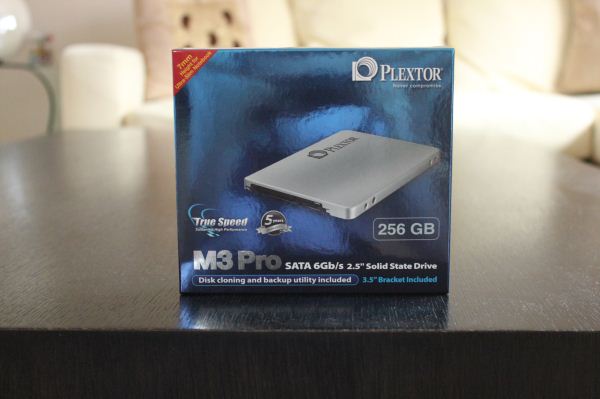
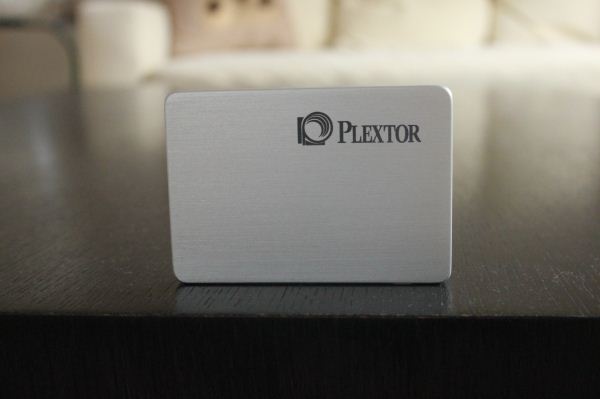
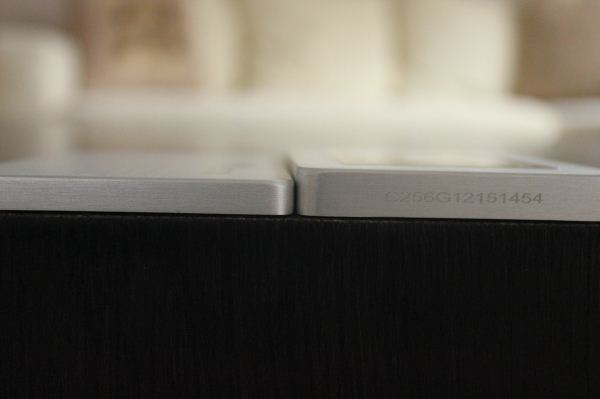
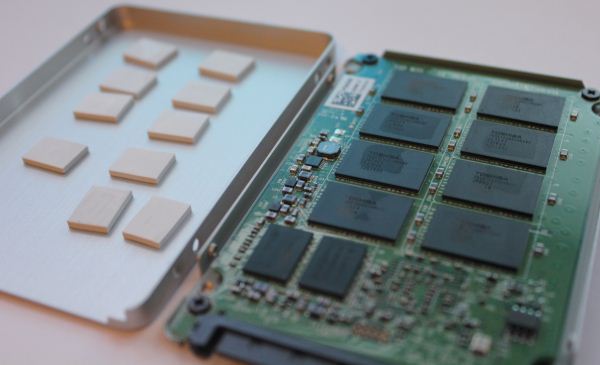
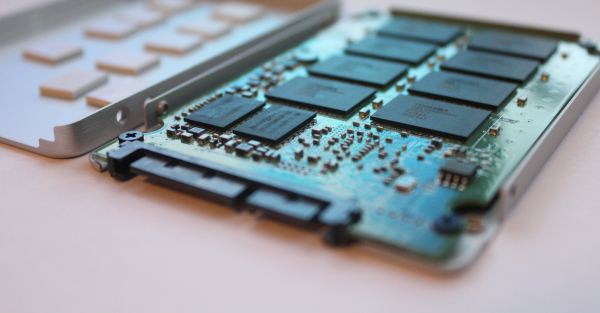
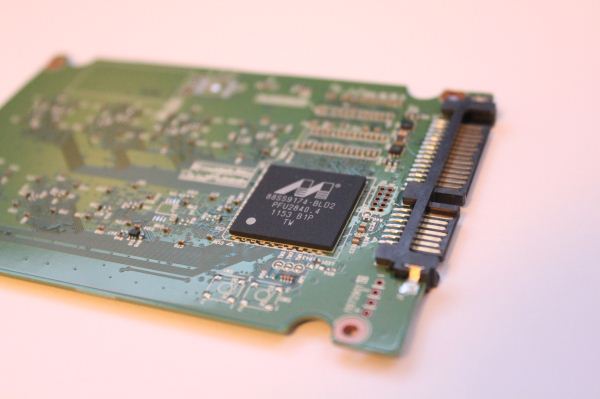








55 Comments
View All Comments
tjoynt - Monday, July 2, 2012 - link
OT: another +1 Internet for the Lexx reference in your name. :)plext0r - Monday, July 2, 2012 - link
You guys remember MITSUMI drives? I remember they were the most sought after for a long time. I still have a Plextor SCSI CD-RW drive sitting in my parts bin. :-)Belard - Monday, July 2, 2012 - link
Yep... but it was more than JUST about speed back in THOSE days... it was about reliability of the drive and its burns.My first optical burner was from HP, it was $600 *USED!* and each blank disc was $10 each. Since I already had a SCSI controller for my $1000 HP scanner (snif - it was bad-ass) it was easy to plug and go.
The failure rates of burns on a 166mhz Pentium was about 60%... very EXPENSIVE. Doing burns required making sure NOTHING was going on in the back ground, no internet, no screen saver. A full disc burn took about 30 minutes... and yes, the drive and discs were hot.
It was years before good IDE burners came out and they were priced at about $200. Even around 2000, it made a difference to buy a $120 SONY burner vs a $75 no-name brands some of my friends would buy. ie: my burners lasted until I upgraded, vs their drives lasting months.
Nowadays, only 3-4 companies actually make burners. They have various labels on them... all of them costs about $15~24.
And yes, optical drives are STILL important and useful.
A REAL WindowsOS DVD is better than a DL version... And this is especially true with MS-Office. A disc version allows 2-3 system installs. The online version at about the same price only installs onto the PC you download it to. When that PC dies or you upgrade... well, that Office is STUCK on that computer.
rarson - Monday, July 2, 2012 - link
Optical drives are an order of magnitude cheaper than they used to be, and for the most part, far less finicky and more reliable. If you buy decent media, you're pretty much guaranteed a perfect burn even at the highest speed setting (which is also an order of magnitude faster). Capacity has greatly increased. Heck, I was just thinking about how disappointing it is that I can't fit more data on a DVD when I realized that 12X+ Blu-Ray burners are less than a hundred bucks. That's cheaper than the first CD-R and DVD-ROM drives I owned... and they read and write over a dozen different optical formats.Forgive me if I don't wax nostalgic about "the good old days." Technologically, there is no better time than the present.
Sufo - Tuesday, July 3, 2012 - link
Hah, agreed. Add to that people reminiscing about when it was still "difficult" to build PCs. It didn't require more skill, just more patience and time. I get it, you want to feel like you're actually creating your PC, not just fitting the parts together, but honestly, that all you were ever doing. There are still great hardware challenges - if anything there are more now than ever with the lowered cost of FPGAs and other integrated circuits.I'm glad that I no longer have to take risks with my expensive PC hardware - I want it to be as trouble-free and reliable as possible and I can't wait for the day when I can look back at this current gen of hardware and laugh at how slow SSDs were.
davepermen - Thursday, July 5, 2012 - link
There was a time where you could not have pc's without them. Software delivery was only trough cds, os installation, again cds. music: cds.Nowadays, you can life without them. Which i do since years. And as we go more and more mobile, they will get even less "the default source to get data from".
There was a time when 650MB was considered huge, and one could store and share everything on cds. Nowadays, not really.
Windows installs much faster from usb stick.
Software typically, when fitting on cds, gets downloaded. If it doesn't, well, still dowdnloading is the way to go, as cds don't matter then anymore anyways.
So no, they are not relevant at all anymore. They where the nr1 way to distribute data at some point in history. That point is gone.
iceman98343 - Monday, July 2, 2012 - link
kristian:when are you guys going to re-review ocz vertex 4? FW 1.5 is out.
jwilliams4200 - Sunday, July 1, 2012 - link
Finally the M3P review is posted! Thanks for the review, but hopefully Anand can get reviews posted in a more timely manner in the future (I understand that Kristian had the review done weeks ago, but Anand's policies or whatever delayed the posting of it)By the way, rumor has it that the soon to be released Plextor M5S will use the same Marvell 9174 controller, but will change to IMFT ONFi flash so it will be slower than the M3P (but presumably much cheaper).
I am hoping that Plextor is working on an M5P that will use Toshiba toggle flash and the new Marvell 9187 controller, but that is just a hope on my part. I have NOT even heard a rumor whether that is true.
Kristian Vättö - Sunday, July 1, 2012 - link
M5S is no longer a rumor: http://www.plextoramericas.com/index.php/ssd/px-m5...ONFi seems likely as sequential speeds are lower (due to less bandwidth between the NAND and controller) but random speeds are slightly higher. There is no press release about the M5S so I'm not sure if the product page has just slipped or something. I'll contact Plextor and ask what's the deal and what is the difference between M3(P) and M5S. Keep your eye on Pipeline for updates ;-)
magreen - Sunday, July 1, 2012 - link
There are only two Toolbox features I ever use for my Intel SSDs: Manual TRIM, b/c I use XP and Vista, and secure erase.Plextool doesn't do manual TRIM at all. And its secure erase is almost nonexistent b/c you need an external enclosure.
That defeats the whole point of having a toolbox, in my mind.